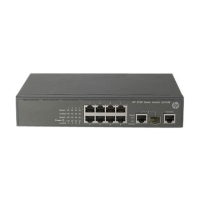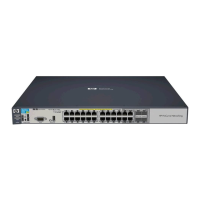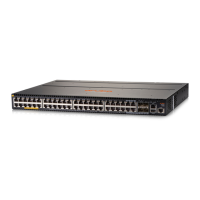162
[SwitchA-isp-dm1] authorization portal radius-scheme rs1
[SwitchA-isp-dm1] accounting portal radius-scheme rs1
[SwitchA-isp-dm1] quit
# Configure domain dm1 as the default ISP domain for all users. Then, if a user enters the
username without the ISP domain at logon, the authentication and accounting methods of the
default domain are used for the user.
[SwitchA] domain default enable dm1
3. Configure portal authentication:
# Configure the portal server as follows:
{ Name: newpt
{ IP address: 192.168.0.111
{ Key: portal in plain text
{ Port number: 50100
{ URL: http://192.168.0.111:8080/portal
[SwitchA] portal server newpt ip 192.168.0.111 key simple portal port 50100 url
http://192.168.0.111:8080/portal
# Enable portal authentication on the interface connecting Switch B.
[SwitchA] interface vlan-interface 4
[SwitchA–Vlan-interface4] portal server newpt method layer3
[SwitchA–Vlan-interface4] quit
On Switch B, configure a default route to subnet 192.168.0.0/24, setting the next hop as 20.20.20.1.
(Details not shown.)
Configuring direct portal authentication with extended
functions
Network requirements
As shown in Figure 53:
• The host is directly connected to the switch and the switch is configured for direct extended portal
authentication. The host is assigned with a public network IP address either manually or through
DHCP. If the host fails security check after passing identity authentication, the host can access only
subnet 192.168.0.0/24. After passing security check, the host can access Internet resources.
• A RADIUS server serves as the authentication/accounting server.
